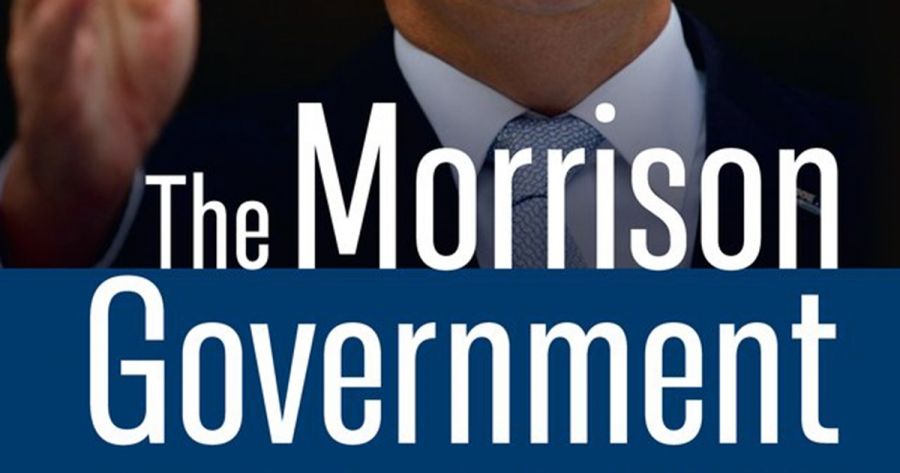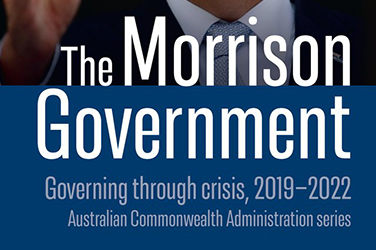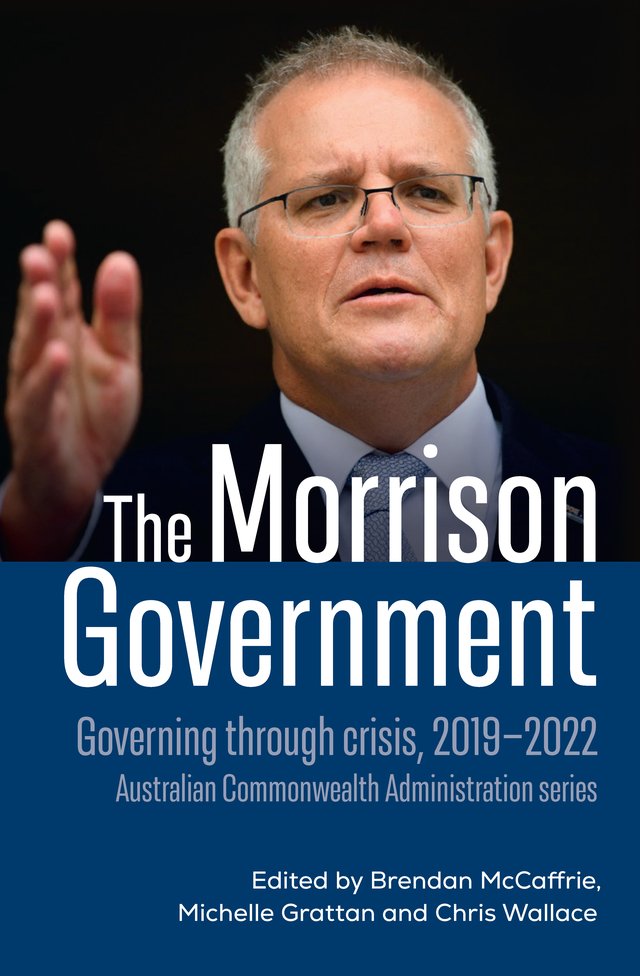
- Free Article: No
- Contents Category: Politics
- Review Article: Yes
- Article Title: 'Every day a crisis'
- Article Subtitle: Morrison’s ignominious second government
- Online Only: No
- Custom Highlight Text:
In June 1971, Sir John Bunting, secretary of the Department of Prime Minister and Cabinet, observed that new prime minister Billy McMahon was ‘the most political of all politicians’: demanding, difficult, always reacting to new, feverish urgencies. The result, according to Bunting, was constant crisis. ‘In fact,’ he went on, ‘I have come to look forward to each new crisis because it is the only way I have discovered of being able to be rid of the existing one.’
- Featured Image (400px * 250px):

- Alt Tag (Featured Image): Patrick Mullins reviews 'The Morrison Government: Governing through crisis, 2019–2022' edited by Brendan McCaffrie, Michelle Grattan, and Chris Wallace
- Book 1 Title: The Morrison Government
- Book 1 Subtitle: Governing through crisis, 2019-2022
- Book 1 Biblio: UNSW Press, $39.99 pb, 311 pp
- Book 1 Cover Small (400 x 600):

- Book 1 Cover (800 x 1200):

This volume, the fourteenth in the Australian Commonwealth Administration series, continues an evolution some years in the works. What was begun in 1984 as a yearly academic journal has become a volume produced after each parliamentary term, and what was an exclusive focus on Commonwealth government administration and bureaucracy has become broader in scope, more overtly political in focus, and increasingly aimed at straddling an academic and general readership. This is generally to be welcomed. Contemporary volumes offer multifaceted perspectives of government operations that are written by experts and complement existing, generally journalist-authored accounts. They also constitute a useful primer on various governments.
But characteristics intrinsic to the series’ original iteration are somewhat problematic in contemporary volumes. The broadened scope makes it impossible not to leave gaps, some of which in this volume are glaring and beguiling: immigration receives negligible attention; regional and rural Australia is little discussed; and the focus on Morrison means that ministers and state premiers, increasingly powerful during the pandemic, are pale shadows. The aim for a general and academic readership, and the mix of contributors from the academy, public service, news media, and elsewhere make for a volume that is either eclectic or uneven – depending on your desire – in substance and in prose style. Geoffrey Watson’s memoir-essay on a federal integrity commission, for example, is compelling but sits oddly bookended by academic dissection of arts policy and natural disasters.
Given the mix of contributors, it is notable that the flavour of this volume, as Michelle Grattan drily writes, is critical of the Morrison government. Chris Wallace deplores the ‘cronyism and loose governmental standards’ of recent years; Stephen Duckett calls the government’s handling of Covid-19 ‘very poor’, arguing that it ‘hindered the states’ successful responses to the pandemic or bungled its own’. Brenton Prosser notes that it did nothing to fundamentally change the status quo of the sorry aged care system, even as it swivelled from blaming providers, denying there was a crisis, to then making scapegoats wherever it could. Emma Dawson says welfare policy reached its ‘nadir’ under Morrison, Andrew Norton concludes that the government ‘provided lessons in how not to do higher education policy’, while Tully Barnett, Julian Meyrick, and Justin O’Connor argue that the arts sector suffered from ‘relentless disparagement’ throughout the government’s tenure.
Doubtless the Morrison government’s few defenders would dismiss the above and point to both the unprecedented times in which Morrison governed and the structural problems they inherited. Superficially, they would have a point. But if the impact of the series of natural disasters Australia suffered in 2019–22 was aggravated by the poor design of Australia’s governance arrangements, as Jacki Schirmer and Lain Dare argue in their pellucid chapter, then it was also exacerbated by the coalition’s decade-long antipathy to climate change mitigation and its timidity about resetting those governance arrangements. ‘I don’t hold a hose, mate,’ might well have been the offhand defence from a jetlagged prime minister, but it was suggestive too of a prime minister unwilling to see that he could, at least, ensure such a hose was available. During the pandemic, the government lurched from talk of national unity to blame-shifting and politicking; given the opportunity to reset the public debate around the economy, after its hopes of a ‘Back to Black’ budget surplus were dashed by the need for spending, the government did nothing to arrest the $40 billion structural budget deficit that it had exacerbated with an irresponsible tax plan passed in 2019.
What emerges particularly strongly in this collection is the government’s short-termism. Renée Leon, secretary of the Department of Human Services from 2017 to 2019, recounts how, shortly after the 2019 election, Morrison assembled departmental secretaries and, in front of a media pool, harangued them about who was in charge. Then he gave a speech assailing any lingering notion that public servants would apolitically and objectively advise government before implementing government decisions. The message, writes Leon, was clear: ‘Ministers were to be the uncontradicted centre for policy ideas and generation.’ But this desire for public servants to cut back on the ‘frank and fearless advice’ and do only what they were told evaporated when the government realised that public service advice and action were necessary to successfully respond to the natural disasters and pandemic. Acknowledgment of the considerable work done was grudging and awareness of the lesson was fleeting: during the 2022 election campaign, Morrison flagged cuts to the public service if he was returned to office.
In this, Morrison was resorting to a time-honoured practice, one that runs throughout the Australian Commonwealth Administration series and which has been evident since the 1970s: politicians’ simultaneous disdain and profound need for the public service. In 1971–72, Billy McMahon harangued Bunting constantly about the public service’s apparent failings, calling it lazy and insisting that he was in charge. And yet, like the Morrison government, when the moment came, McMahon clamoured for its help: ‘Where were the answers?’
For those seeking to know what the Morrison government did, why it lost office, and why it should outrival the McMahon government for ignominy and derision, this volume is one place to find answers.


Comments powered by CComment